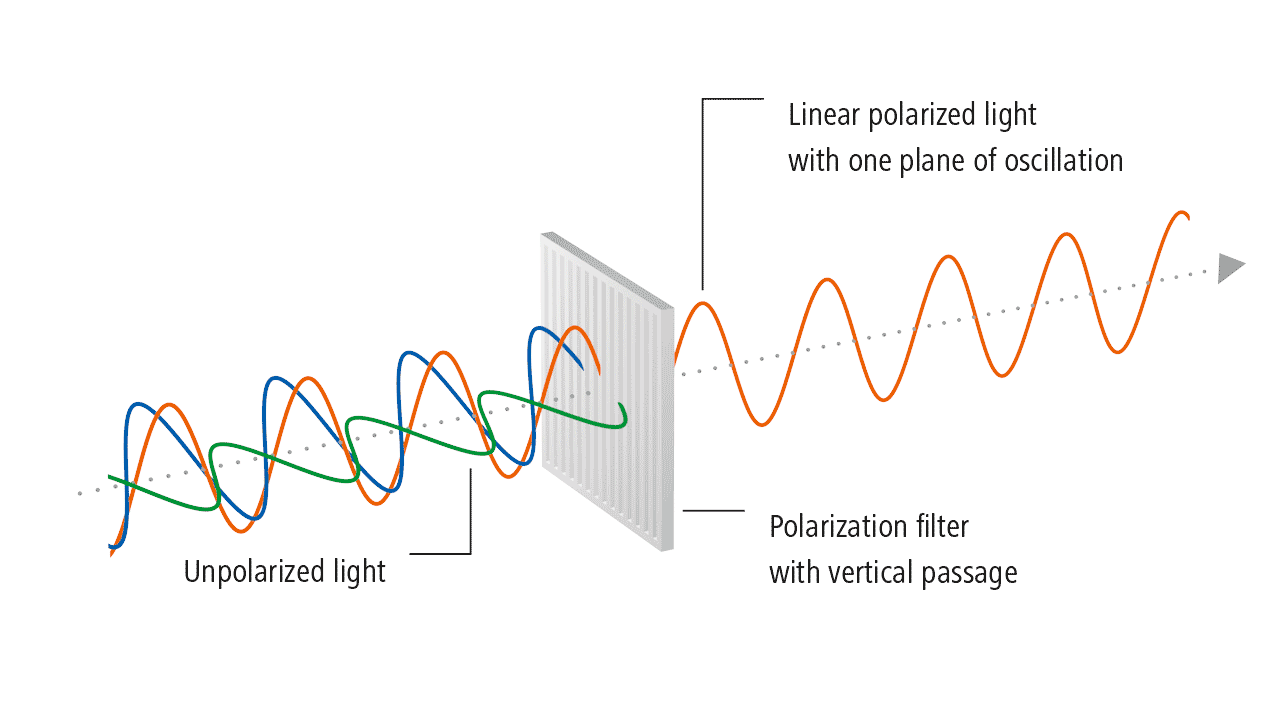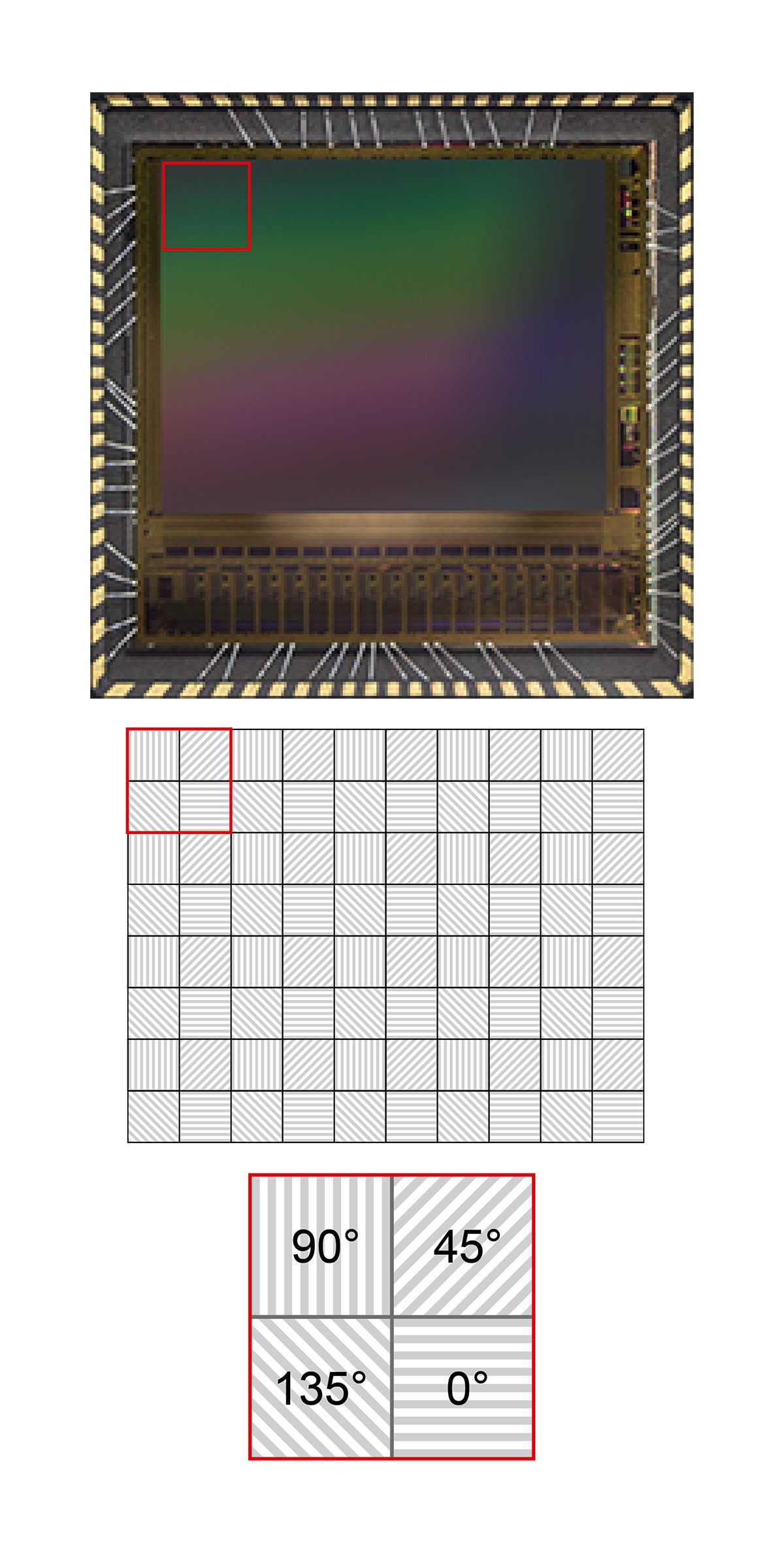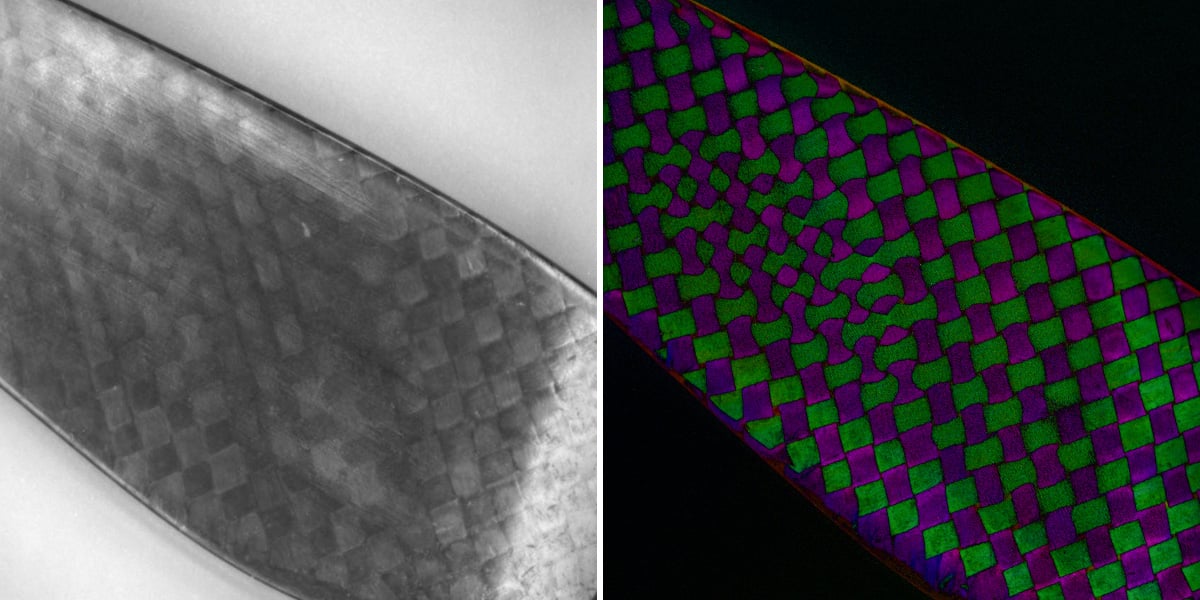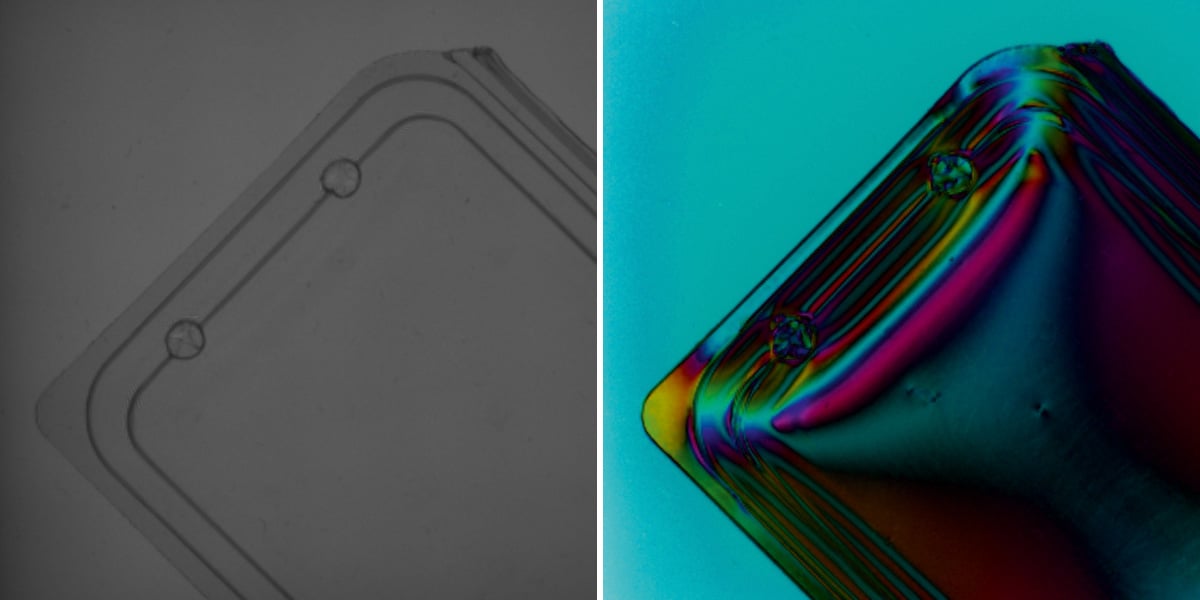Benefits
The Baumer polarization CX series cameras integrate on-chip polarizing filters at the pixel level. This way, they feature higher contrasts in intensity images for inspections on low-contrast or reflecting surfaces and transparent materials. Besides light properties such as wavelength (color) and amplitude (brightness), this efficient approach also evaluates the light wave’s direction of oscillation or polarization caused by effects of reflections and refractions on materials.

Your benefits:
- Higher contrasts in the intensity images of low-contrast material surfaces which polarize light to different degrees locally, e.g. carbon-fiber-reinforced polymer CFRP
- Higher contrasts in the intensity images of reflecting surfaces by suppression of the reflected light portions, e.g. glass, plastic and metallic glossy materials, such as packaging films
- Visualization of residual stress by refracted light on transparent materials, e.g. glass or plastic
Examples:
Left: Imaging of monochrome camera
Right: Imaging of polarization camera with colored degree of polarization
Imaging with polarized light
When describing light as an electromagnetic wave, each individual oscillations plane can also be referred as a polarization plane. For the use of imaging polarization applications, the following polarization types have to be distinguished:

- Unpolarized light consists of many superimposed light waves such as sunlight, light emitted by electric bulbs and most types of LEDs.
- Linearly polarized light consists of only one oscillations plane. It’s present in many applications and can be easily evaluated by polarization cameras.
- Elliptic and circular polarized light, which can occur during the inspection of glass, for example, depending on the light waves’ amplitude and phase constellation and which must be considered in system design.
Beyond polarization by reflected and refracted light, illumination allows linear polarization by polarizing filters. For example, these are required in inspections on reflecting metal surfaces.
During image acquisition, the polarizing filter is suppressing the content of linearly polarized light in order to avoid reflections and overexposure in some sections of the image.
Polarizing filters at pixel level

The 5 Megapixel Global Shutter Sensor IMX250MZR from Sony with additional polarizing layer integrates on-chip four polarizing filters arranged in repeating two-pixel blocks (2×2). These filters are oriented to 0°, 45°, 90° and 135° and cover the entire pixel array. The filters are placed below the micro-lenses to avoid crosstalk of incident light to adjacent pixels. Similar to color sensors with 2×2 Bayer pattern, both the angle of polarization (AOP) and degree of polarization (DOLP) of the linearly polarized light are interpolated for each pixel based on the adjacent pixels.
Unlike conventional solutions using mechanical filter wheels or several cameras with individually aligned polarizing filters, the pixel-level polarizer structure provides essential benefits:
- Easy imaging of moving objects, since all four directions of polarization are acquired in a single image
- Reduced system cost thanks to easy integration a limited number of system components
- Reliable system design without any moving parts like filter wheels
Application examples
Packaging of blister packs

Visualizing residual stress

Inspections on product packaging


Inspection on deformations

Product portfolio
Downloads
Brochures / Catalogs
-
Brochure – High-performance industrial cameras







